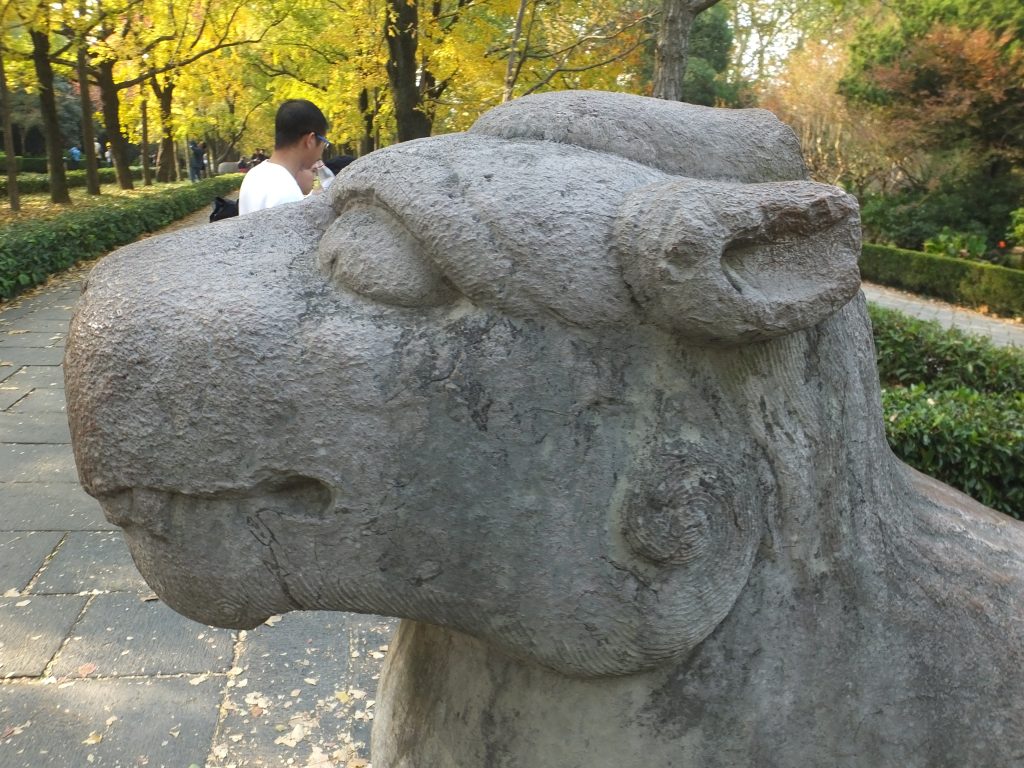Standing silently along the Sacred Way of Ming Xiaoling, the Qilin and Xiezhi appear to be mere stone sculptures—until viewed through a digital archaeological lens. In my research project, I employed aerial photogrammetry and 3D modeling to document and analyze these two ritual beasts, uncovering their layered meanings within Ming imperial funerary culture.

A Close Study of the Xiezhi’s Head
The Qilin, with its composite form of dragon, deer, and ox, symbolized Confucian virtue and cosmic legitimacy. By digitally reconstructing its scales and positioning, I examined how the emperor’s moral authority was carved—literally—into stone. Meanwhile, the Xiezhi, a horned beast believed to distinguish right from wrong, stood as a visual metaphor for imperial justice. My spatial analysis revealed its unique 15° horn tilt—a calculated angle likely meant to reinforce its role as a judicial icon.

Aerial Gaze of a Sacred Beast: The Qilin from Above
This project deepened my understanding of how political ideology was encoded in ritual space and visual form. More importantly, it showed me how historical inquiry can be enhanced through digital tools, transforming ancient symbolism into interactive, measurable knowledge. Through stone and software, I found a new way to read the past—and to preserve it for the future.
